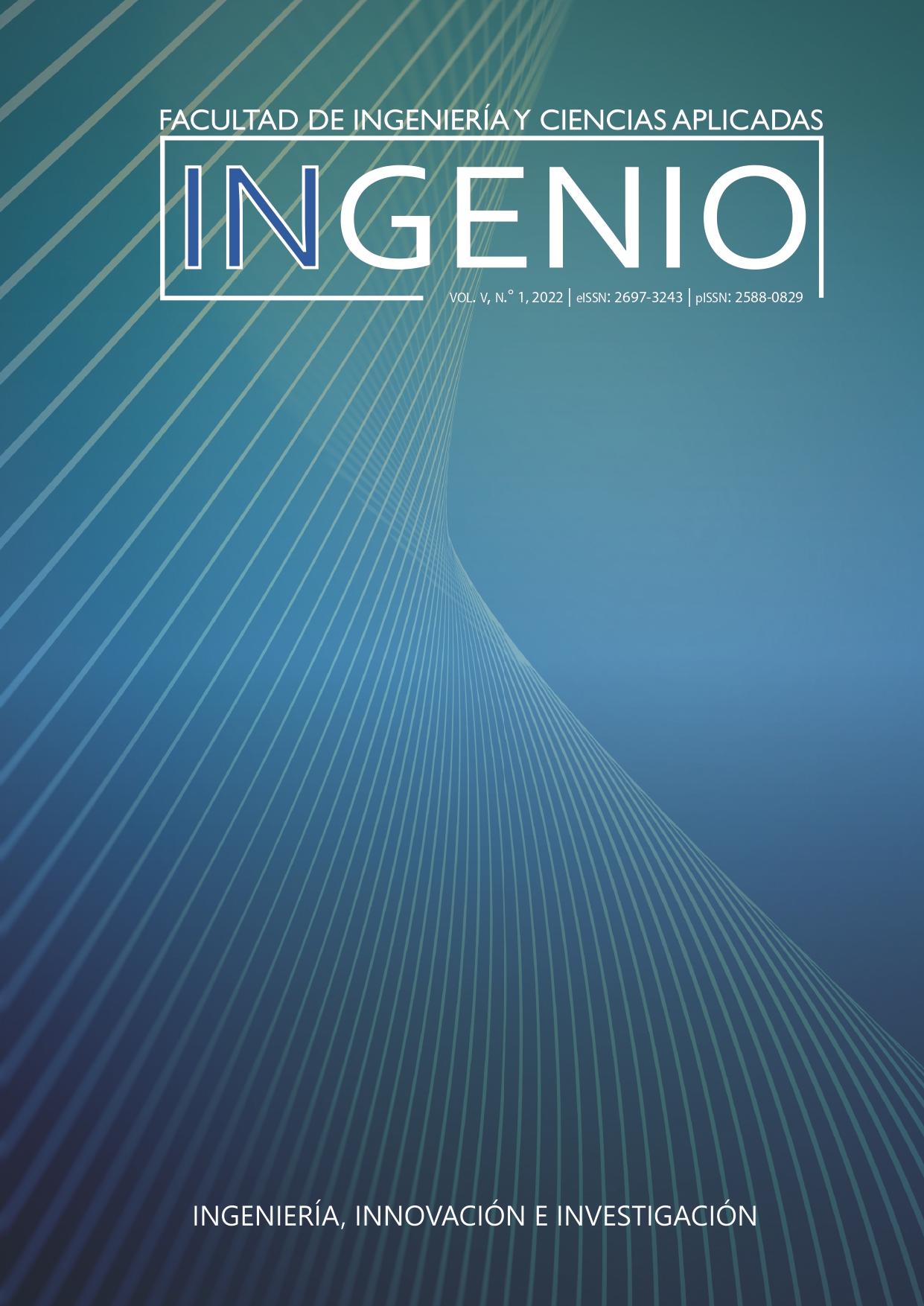Adoquines de Hormigón Eco-Amigables Fabricados con la Incorporación de una Mezcla de Micro-Nano Sílice
Contenido principal del artículo
Resumen
En el presente estudio se utilizó micro y nano partículas de sílice en la fabricación de adoquines de hormigón como sustituto parcial del cemento, lo que contribuye directamente en la disminución del consumo energético, así como la reducción de la emisión de gases como el CO2 generados en la descarbonización de la piedra caliza durante el proceso de clinkerización, los cuales agravan el efecto invernadero. El objetivo principal de esta investigación es establecer la influencia de la mezcla de micro-nano partículas de sílice en las propiedades físico-mecánicas del adoquín de hormigón. Para este estudio, se reemplazó el microsílice por cemento, con tasas de reemplazo de 5%, 10%, y 15% (al peso) y de nanosílice en porcentajes de 1%, 1.5% y 3% (al peso). La prueba de resistencia a la compresión a los 28 días mostró que los adoquines con un reemplazo del 15% de microsílice y 3% de nanosílice aumentaron su resistencia en un 28% y 12%, respectivamente en comparación con mezcla de control. Por último, se realizaron dos mezclas mix (combinación de nano y microsílice) con los porcentajes óptimos encontrados anteriormente (15% microsílice + 3% nanosílice) y una con menores valores de remplazo (7.5% microsílice + 2% nanosílice), con el fin de obtener la mejor combinación, en cuanto a resistencia. La prueba de resistencia a la compresión a los 28 días mostró que la mezcla mix, con un reemplazo del 15% de microsílice y 3% de nanosílice aumentó dicha resistencia en alrededor del 23%, en comparación con mezcla de control. La última fase de la investigación consistió en someter a los especímenes óptimos a los ensayos especificados en la norma técnica ecuatoriana para adoquines prefabricados de hormigón NTE INEN 3040: 2016, de los cuales se obtuvieron resultados muy satisfactorios. Finalmente se concluyó que las adiciones de nano y micro partículas de sílice en sustitución de cemento, permiten obtener adoquines con mejores desempeños tanto por resistencias mecánicas como por durabilidad y constituyen una alternativa viable para la fabricación de un nuevo tipo de adoquín que contribuya a la reutilización de materiales alternativos, subproductos de procesos industriales, generando un beneficio ambiental.
Descargas
Métricas
Detalles del artículo

Esta obra está bajo una licencia internacional Creative Commons Atribución-NoComercial-SinDerivadas 4.0.
Citas
T. Echaveguren Navarro, “Manual de Diseño de Pavimentos de Adoquines de Hormigón Publicación,” vol. 4, no. 1, pp. 64–75, 2016, [Online]. Available: https://issuu.com/ich_mkt/docs/manual_diseno_de_pavimentos_de_adoq
V. V. Salguero Caicedo, “Adoquines modificados con fibra de propileno para el uso en vías de la ciudad de Quito.,” Quito: UCE., Quito, 2013. Accessed: Jun. 15, 2020. [Online]. Available: http://www.dspace.uce.edu.ec/handle/25000/2212
X. S. Escobar Mora and J. E. Rivas Recalde, Uso de espuma flex como agregado para la elaboración de adoquines de hormigón, no. Figura 1. 2016.
A. C. Pariguamán Quilumba, “Correlación entre las propiedades mécanicas de los adoquines ecológicos fabricados con agregados reciclados y adoquines convencionales,” Quito: UCE, 2017. doi: 10.1097/INF.0000000000002124.
R. V. Cisneros Gómez, “Análisis de la industria cementera en Ecuador, concentración versus abuso de poder de mercado en el periodo 2011-2015,” Quito, Nov. 2017.
L. Rodgers, “La enorme fuente de emisiones de CO2 que está por todas partes y que quizás no conocías,” BBC News Mundo, Dec. 17, 2018. https://www.bbc.com/mundo/noticias-46594783 (accessed May 31, 2021).
J. Cagiao et al., “Huella Ecológica del Cemento,” Coruña, Jun. 2010.
S. Dhabhai and R. Singh Shekhawat, “Optimized Concrete Paver Blocks Utilizing Micro Silica As a Partial Replacement of Cement,” Int. J. Tech. Res. Sci., vol. 5, no. 10, pp. 30–37, 2020, doi: 10.30780/ijtrs.v05.i10.005.
Q. Bianchi, Application of nano-silica in concrete, no. 2014. 2014. doi: 10.6100/IR780551.
D. Tavakoli and A. Heidari, “Properties of concrete incorporating silica fume and nano-SiO2,” Indian J. Sci. Technol., vol. 6, no. 1, pp. 3946–3950, 2013, doi: 10.17485/ijst/2013/v6i1.12.
A. Hamdy El-Didamony, S. Berry Abd El-Ghani, and M. Saleh Abd El-Aleem, “Chemical and Engineering Properties of Blended Cement Containing Micro- and Nano-silica,” Am. J. Chem. Eng., vol. 5, no. 5, p. 111, 2017, doi: 10.11648/j.ajche.20170505.13.
P. Mondal, S. P. Shah, L. D. Marks, and J. J. Gaitero, “Comparative study of the effects of microsilica and nanosilica in concrete,” Transp. Res. Rec., no. 2141, pp. 6–9, 2010, doi: 10.3141/2141-02.
J. J. Howland Albear, “Estudio de las proporciones óptimas de microsílice y nanosílice en hormigones de alto desempeño por durabilidad , mediante un diseño de experimento de tipo hexagonal,” vol. VII, no. 2, pp. 26–32, 2016.





